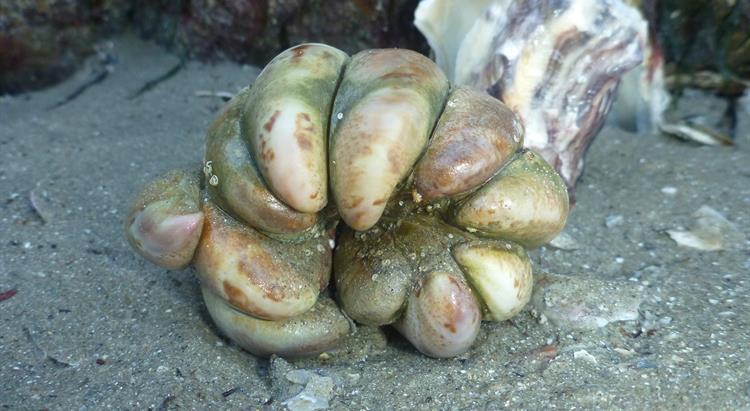16 January 2018

Jersey now has the information it needs to begin to address the risks posed by a growing number non-native marine species.
The Department of the Environment has carried out a study of the non-native marine species that have already affected or are likely to affect the Channel Islands. These include creatures like the American Slipper Limpet, and seaweeds such as Wakame.
Hard to spot
Non-native species can have a significant effect on local species and habitat but the impact can be hard to spot in the early stages. Local divers have seen the American Slipper Limpet (Crepidula fornicata) covering 100% of the seabed in some areas. However, many other high impact species are less noticeable as they may live under stones or remain unrecognised by all but a handful of knowledgeable naturalists and experts.
A report on the work, published as a book and available online, explains that the Channel Islands are at a cross roads between colder seas from the north and warmer waters to the south which makes them attractive to an unusually large number of non-native marine species from the wider English Channel, North Sea and Bay of Biscay.
Non-native species may arrive from neighbouring areas via the shallow seabed and strong tidal currents or with commercial and leisure shipping.
Potential to reach Jersey
The study found that there are 43 known non-native marine species in Channel Island waters, a further 25 species which are probably established but have yet to be identified, and 66 other species that have the potential to reach the islands and establish themselves.
It concludes that Jersey needs to increase its monitoring and reporting work, and continue to work closely with partners in the other Channel Islands, UK and France to share knowledge and best practice. The report’s findings will form part of a wider departmental strategy regarding all non-native species is currently being developed.
Coastal Manager for the Department of the Environment and author of the study, Dr Paul Chambers, said ‘Judging the likely effect of a newly arrived non-native species isn’t straightforward. As with so many areas of the environment, by the time the scale of a threat is realised, it can be too late to do anything about it.
‘However, as a result of this study, we now have a strong baseline of information from which to develop an approach. We also have strong relationships with neighbouring countries which we can develop and build on to share knowledge and resources.’
The report is called: Non-native Marine Species in the Channel Islands: A review and assessment, The Department of the Environment, 2017.
A
printed copy has been produced by the Société Jersiaise and may be purchased at their bookshop or via online retailers.